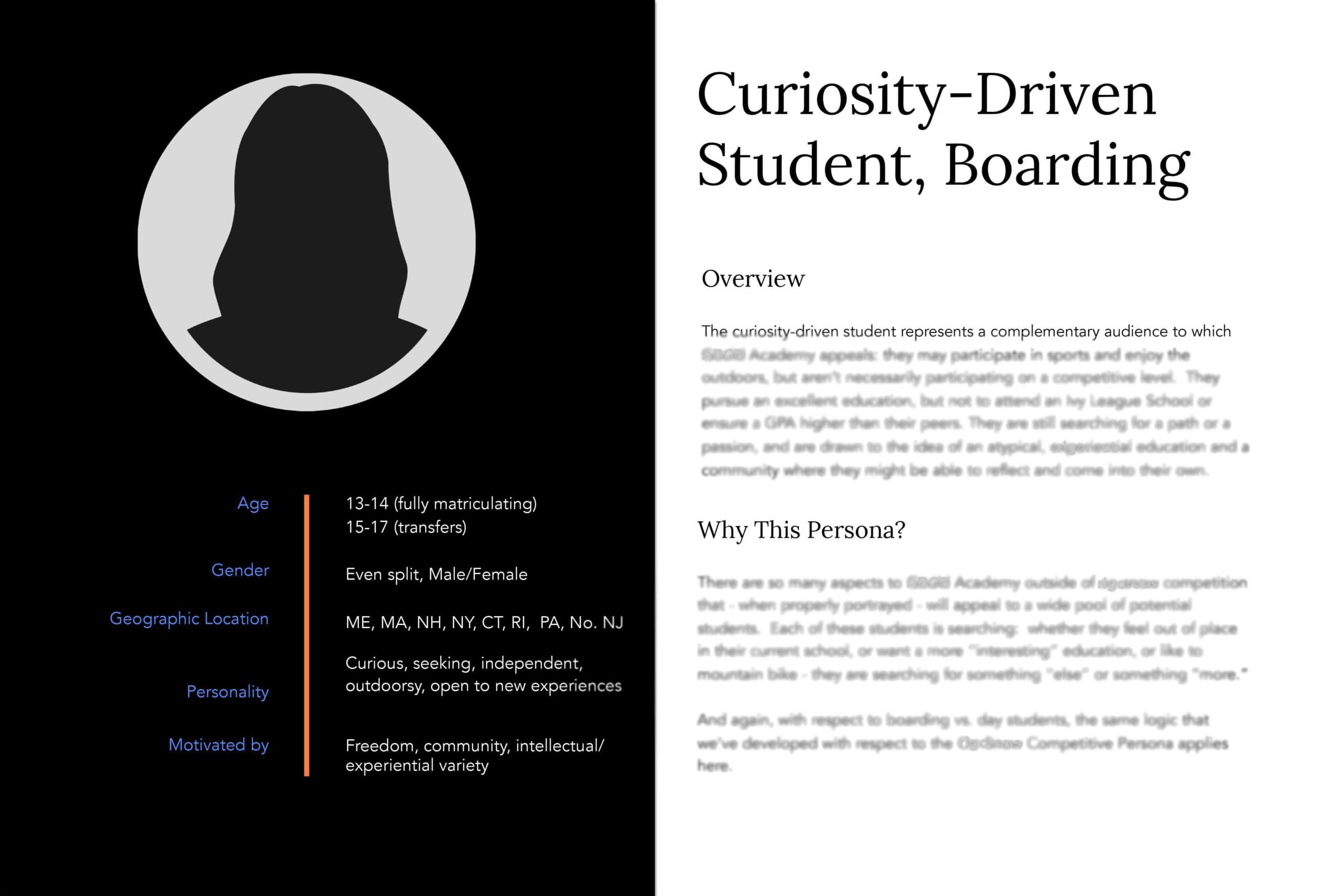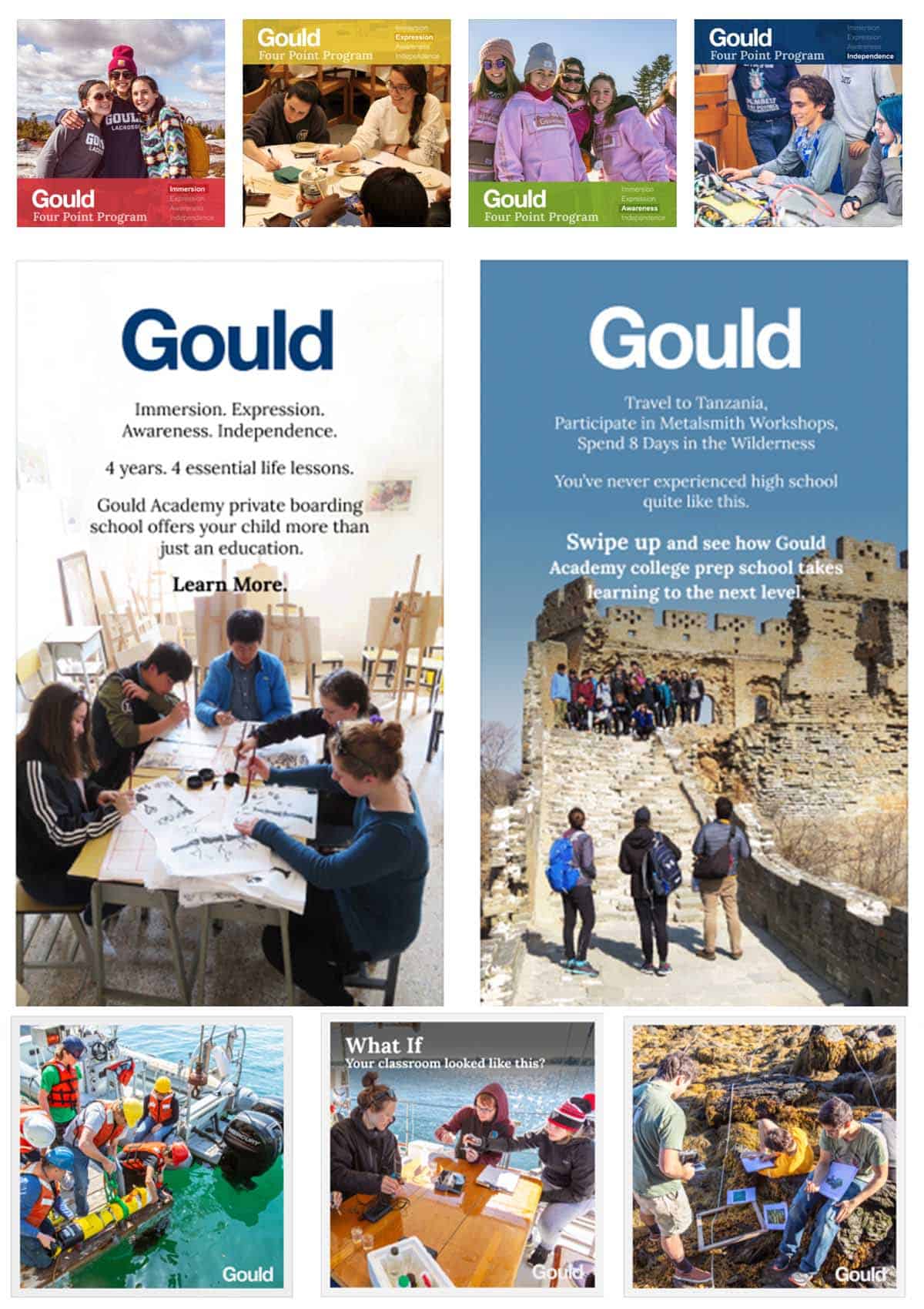June 11, 2020
3 Steps to Building an Online Student Recruitment Pipeline
Now that the coronavirus has put a temporary hold on in-person recruitment events and travel, it’s critical that independent schools build the infrastructure, strategy and tactics necessary to reach prospective students and families online.
Even when things return to (a new) normal, having these systems in place will pay future dividends in terms of exposure, new student applications and the processes a school needs in order to compete in a transformed world.
Whether you have these tools in place and need to refine them, or are new to online outreach, here are the three steps required to develop a strong and effective online student recruitment pipeline:
1. Know Your Audience
Developing a clear picture of your ideal prospective student is the most important factor in building a successful online marketing channel. The more accurately you can define your target audience, the easier it is to select the right platforms and create the most effective digital assets, content and messaging.
As a member of the admissions, advancement or marketing team, you’ll already have access to current student demographics, geographic origination, and other relevant information; ideally, you’ll also have admission and exit interviews that provide insight as to what drew students to your school to begin with.
Combined with your own intuition and experience, these data sets provide a good foundation, but you’ll need to add a few more steps to vet your thinking and strip out any biases accumulated from having been so close to the information.
In addition to your existing data pool, we recommend the following:
- An Internal Q&A
- Consider this a rigorous “self-interview” of perhaps 10-15 questions that will help you to revisit your assumptions about the types of students you’re looking for and the benefits your school has in place to attract them. Some questions might include:
- What is our unique selling proposition (USP); why would our target student want to come here?
- What reasons do students give for applying and being accepted, but not attending?
- What has been the biggest obstacle in getting more applicants to the school, and then getting those who apply to matriculate?
- Stakeholder and Target Audience Interviews
- Speak to individuals outside of your internal marketing and admissions team who can help refine who your ideal student is and of what makes the school unique. The numbers of people you speak to depends on time and available staff, but at minimum, you should connect with five individuals that encompass existing teachers and/or coaches, parents and students. Each of these will help to paint a clearer picture of your ideal student and can potentially inspire messaging and marketing directions that you hadn’t considered.
- Website and Social Media Analytics
- Test subjective or qualitative findings against actual data, which you can find in your Google Analytics, Facebook Insights and email marketing platforms:
- Do our interview findings match up against the demographics of who’s actually participating in social media conversations?
- Are website users visiting a particular blog post more than others? What does that say about the topics they’re interested in?
- What emails are getting the highest open rates–and, more importantly–the highest click-through rates? Does that jive with what our interviews and existing data have revealed?
Taken together, these findings will help you develop your target student persona, or snapshot of whom you’re hoping to attract. A detailed discussion of persona development is outside the scope of this post, but we’ve found that you don’t need to go overboard. A concise summation of the most critical target data is all you need. Here’s what our persona template looks like:

Your persona(s) can be refined along the way, but you’ll now have a formal vision around which you can base your campaigns.
2. Create Content and Visuals that Speak to Prospective Families
The exhaustive analysis in step one was to understand your ideal prospective student, their needs and motivations. From that research, you’ll have distilled answers to questions like:
- What differentiates us from other schools that we can now incorporate into our visuals and messaging?
- What type of student thrives here?
- What constitutes our voice or “brand,” so that we can capture this element and ensure it’s consistent across our creative elements?
You’ll see that these answers begin to take the form of stories that you can translate into images, graphics, video and messaging.
Keep in mind that in a successful online student outreach, the student will see themselves in the school.
Pay close attention to your school’s differentiating characteristics. These are great areas around which to build stories and campaigns that resonate with your prospective audience(s).
In our work with Gould Academy in Maine, we discovered early in our process that despite being known for producing world-class on-snow athletes, Gould also offered a unique “experiential” form of education, where students received hands-on learning in a variety of subjects. If they wanted to learn Spanish, they could do so–in Spain. Those interested in environmental studies could learn in the field in the White Mountains, makers could participate in metalsmithing and woodworking classes, and more.
This was a storytelling goldmine that we built into a series of campaigns centered around experiential learning, the results of which were highly successful:

Keep in mind that in a successful online student outreach, the student will see themselves in the school. To that end, the quality of your images and video is important. Stock imagery won’t cut it. If you don’t already have a pool of high-quality, native images and student videos, we recommend hiring an experienced photographer and/or videographer. The collection of these assets should be an on-going process and will provide content that you can use in areas beyond your student recruitment efforts.
3. Launch and Then Act on What the Data Tells You.
As you launch your online student recruitment initiatives, keep a close eye on the various data your campaigns are producing. The more data you’re collecting, and the closer you analyze it, the more accurately you’ll be able to determine which ads and campaigns are driving the most traffic and resulting in the most conversions–whether those are form completions, phone calls or in-person/virtual campus visits. At a minimum, you’ll want to look at:
- Google Analytics
- Are your campaigns resulting in visits to your landing pages? Which ones?
- How much time are visitors spending on specific pages? Are they converting?
- What path are users following when they arrive at your site? What pages are they visiting the most after arriving?
- Social Media Platforms
- If you’re running paid advertising as part of your campaigns, the major social platforms offer a wide range of data to consider, including:
- Reach – how many people receive the ad
- Impressions – how many times the ad appears on screen
- Cost per result
- Link Clicks/Video Views
All together, this information will help you understand which ads are working, which aren’t, and those for which you should be aiming to drive down the cost per ad (i.e, optimizing).
- Google (PPC): Display or Text Ad Campaigns
- Reach, impressions and cost per clicks
- Ad position
- Phone calls or form completions based on these ads
After initial campaign launch, you’ll want to wait about 2-4 weeks to gather enough data to start to make optimization and spending decisions. After that point it becomes critical to study campaign data on a regular basis; we recommend every two weeks as a starting point.
What I’ve provided here is simply a basic overview of the key points you should emphasize when building an online admissions pipeline. There are a host of other factors to consider–from building a landing page that converts to creating compelling video that draws the attention of potential students and families–that I’ll be covering in future posts.
In the meantime, though, these three steps will help you form the foundation of a system that brings your school a steady flow of interested students to help meet your recruitment goals.
TAGS: digital marketing, education, private school, student acquisition
Visiting?
Here we are.
350 Springfield Avenue #200
Summit, NJ 07901
info@bcsinteractive.com
973.377.1175
Are you ready to learn?
As a digital marketing agency for nonprofits, we write about the work and campaigns we produce, and share what we’ve learned along the way.
Count Me InSubscribe to the Blog
Sign up for monthly marketing insights you can put to use right away.
Subscribe Here